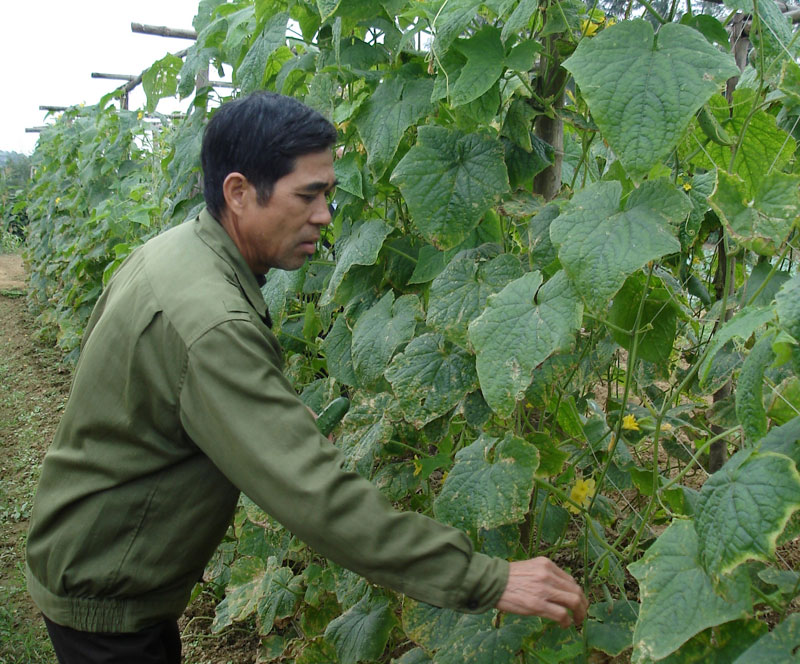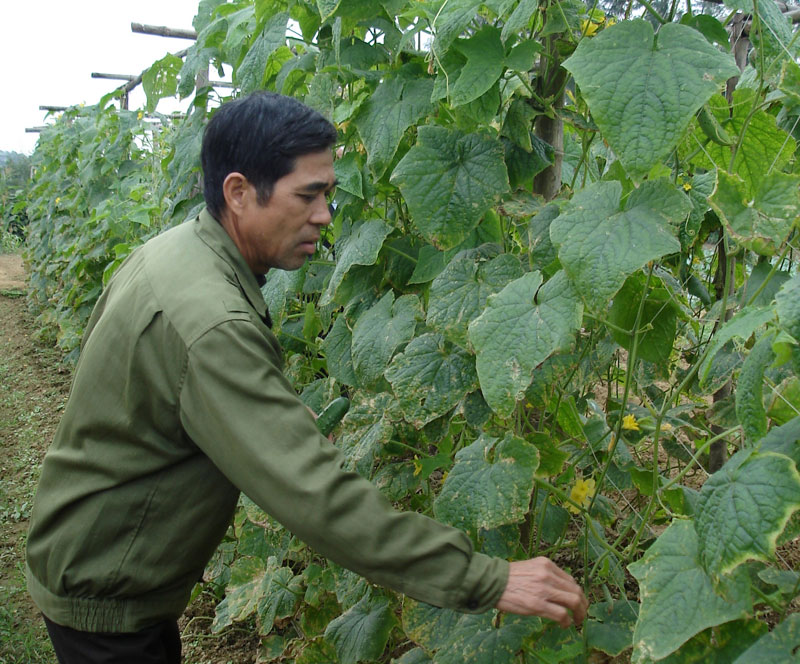
HBO – Luong Son district holds much potential to develop agricultural economy and is considered a key economic district of Hoa Binh province.

Farmers in Nhuan Trach commune (Luong
Son district) chooses organic vegetables as main crops
Following general orientations, Luong Son district’s townships and
communes have carried out suitable policies, thus helping create a combined
strength to boost the district’s agricultural economy.
After five years (2013-2017) of restructuring, the
agro-fishery-forestry sector enjoys an average growth rate of 4.13 percent a
year, with the production value per hectare increasing from 87 million VND per
year in 2013 to 168.9 million VND per year in 2017, or an annual growth rate of
18.05 percent. Thanks to improved production efficiency, per capita income in
the agricultural sector has increased. The poverty rate in 2017 stood at 4.83
percent, down 2.53 percent from that of 2013.
Production and consumption chains have been formed, while models with
high economic efficiency expanded, including green-skin and Dien grapefruit
planting model with revenue of over 350 million VND a hectare, longan growing model
with revenue of 250 million VND a hectare, organic vegetable model with income
of over 300 million VND per hectare.
The district’s agricultural economy has shifted towards improving
added value and sustainable development. Several positive results are seen when
comparing with a set of criteria for the supervision and assessment of
agricultural restructuring. Notably, the average growth rate during 2013-2017
reached 4.13 percent a year, higher than the target set for the northern
mountainous region (3 percent a year).
The production value per hectare rose to 168.9 million VND per year, and revenue
from husbandry increased by 5.37 percent a year, both higher than the region’s
targets. The rate of skilled farmers hit 46.9 percent, much higher than the
region’s goal of 27 percent.
In addition, Luong Son is the province’s leading locality in terms
of new-style rural area building. To date, the district has 10 out of 19
communes achieving all new-style rural area criteria, or 52.6 percent – the
highest rate compared with other localities in the province./.
According to data from the Hoa Binh Provincial Party Committee, the industrial production index for the first six months of 2025 is estimated to have increased by 20% compared to the same period last year. This marks the highest year-on-year growth rate for this period since 2020.
In the first six months of 2025, Hoa Binh province’s export turnover was estimated at 1.145 billion USD, marking an 18.11% increase compared to the same period in 2024. Import turnover was estimated at $ 804 million, a 17.15% increase, which helped the province maintain a positive trade balance.
The lives of the ethnic minority farmers in Tan Lac district have gradually improved thanks to the new directions in agricultural production. This is a testament to the collective strength fostered through the professional associations and groups implemented by various levels of the district’s Farmers’ Union.
With the motto the "product quality comes first,” after nearly one year of establishment and operation, Muong village’s Clean Food Agricultural and Commercial Cooperative, located in Cau Hamlet, Hung Son Commune (Kim Boi district), has launched reputable, high-quality agricultural products to the market that are well-received by consumers. The products such as Muong village’s pork sausage, salt-cured chicken, and salt-cured pork hocks have gradually carved out a place in the market and they are on the path to obtaining the OCOP certification.
In the past, the phrase "bumper harvest, rock-bottom prices" was a familiar refrain for Vietnamese farmers engaged in fragmented, small-scale agriculture. But today, a new spirit is emerging across rural areas of Hoa Binh province - one of collaboration, organisation, and collective economic models that provide a stable foundation for production.
Maintaining growing area codes and packing facility codes in accordance with regulations is a mandatory requirement for agricultural products to be eligible for export. Recently, the Department of Agriculture and Environment of Hoa Binh province has intensified technical supervision of designated farming areas and packing facilities to safeguard the "green passport" that enables its products to access international markets.



